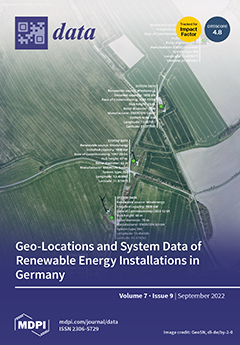Sweet cucumber
(Solanum muricatum) sect.
Basarthrum is a neglected horticultural crop native to the Andean region. It is naturally distributed very close to other two
Solanum crops of high importance, potatoes, and tomatoes. To date, molecular tools for this crop remain undetermined. In
[...] Read more.
Sweet cucumber
(Solanum muricatum) sect.
Basarthrum is a neglected horticultural crop native to the Andean region. It is naturally distributed very close to other two
Solanum crops of high importance, potatoes, and tomatoes. To date, molecular tools for this crop remain undetermined. In this study, the complete sweet cucumber chloroplast (cp) genome was obtained and compared with seven Solanaceae species. The cp genome of
S. muricatum was 155,681 bp in length and included a large single copy (LSC) region of 86,182 bp and a small single-copy (SSC) region of 18,360 bp, separated by a pair of inverted repeats (IR) regions of 25,568 bp. The cp genome possessed 87 protein-coding genes (CDS), 37 transfer RNA (tRNA) genes, eight ribosomal RNA (rRNA) genes, and one pseudogene. Furthermore, 48 perfect microsatellites were identified. These repeats were mainly located in the noncoding regions. Whole cp genome comparative analysis revealed that the SSC and LSC regions showed more divergence than IR regions. Similar to previous studies, our phylogenetic analysis showed that
S. muricatum is a sister species to members of sections
Petota +
Lycopersicum +
Etuberosum. We expect that this first sweet cucumber chloroplast genome will provide potential molecular markers and genomic resources to shed light on the genetic diversity and population studies of
S. muricatum, which will allow us to identify varieties and ecotypes. Finally, the features and the structural differentiation will provide us with information about the genes of interest, generating tools for the most precise selection of the best individuals of sweet cucumber, in less time and with fewer resources.
Full article





